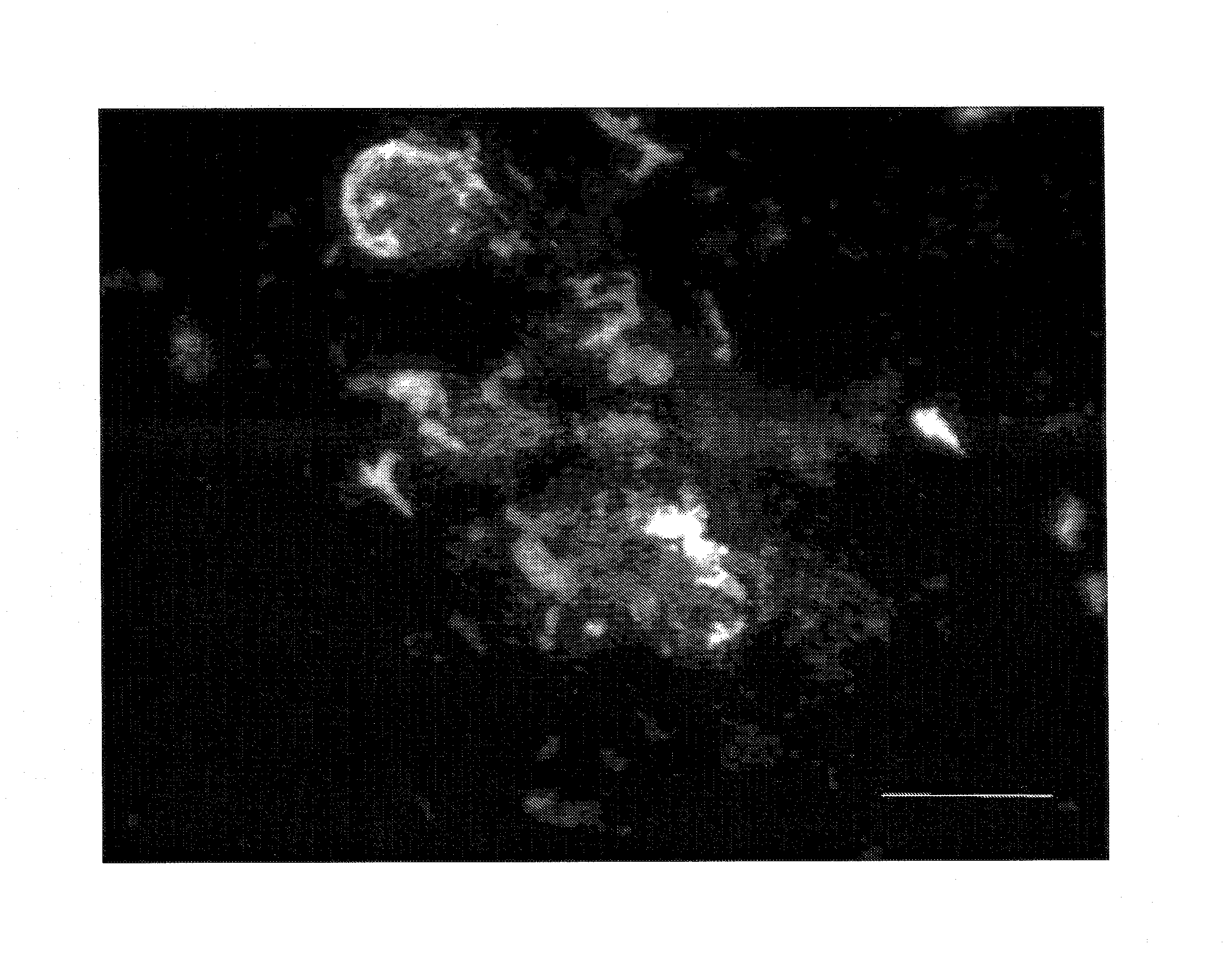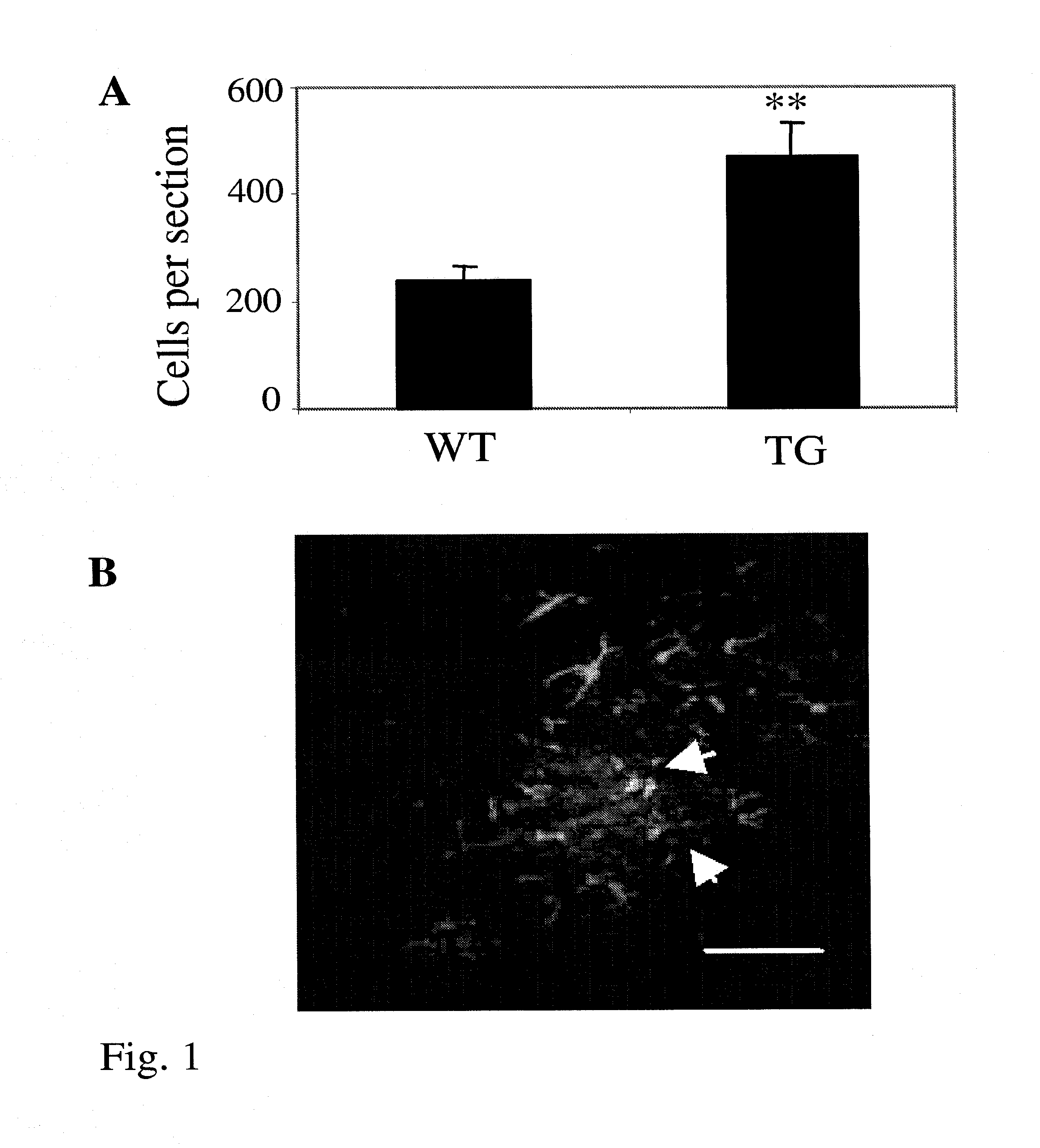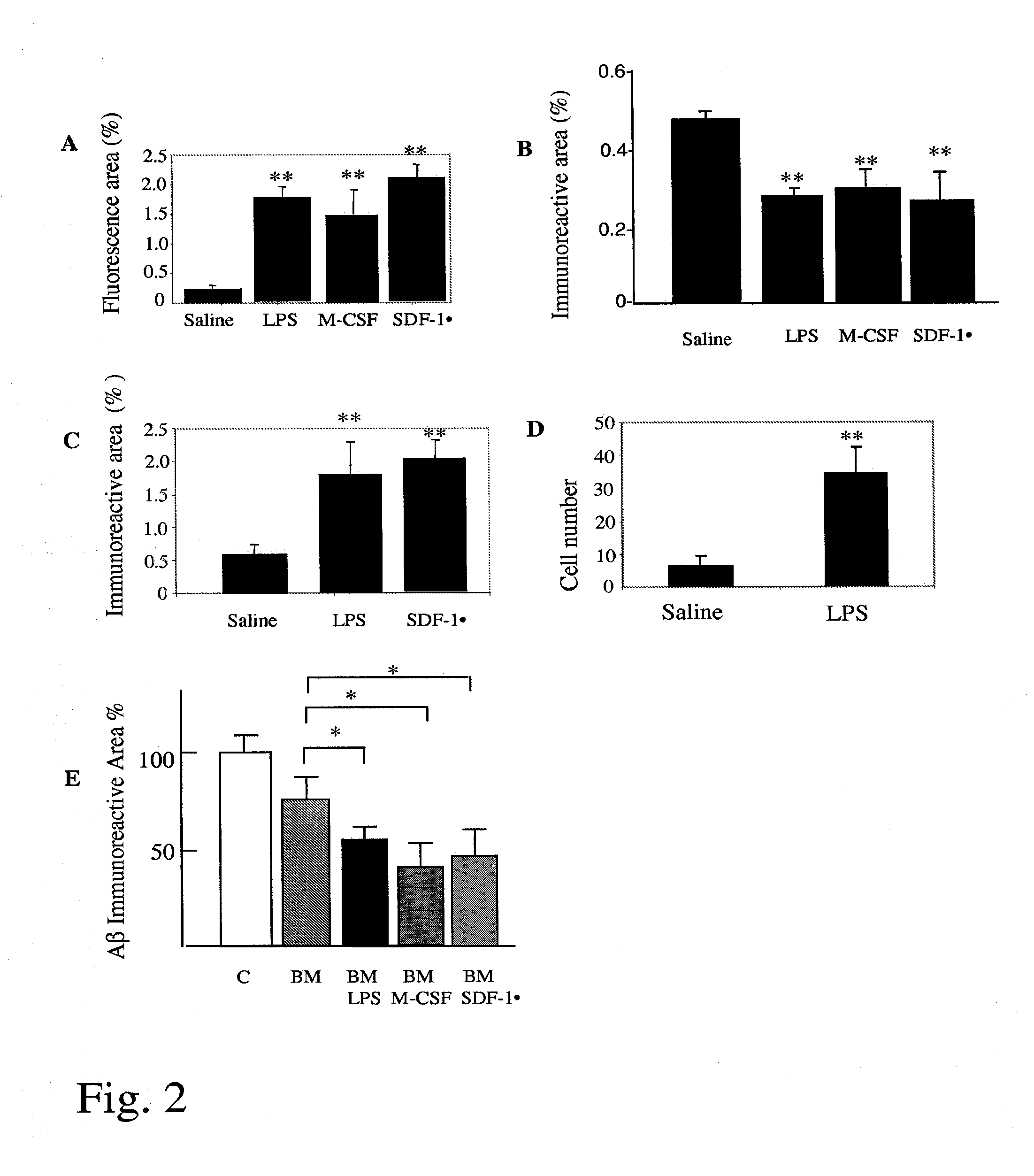Method for stimulating mammalian cells and mammalian cell
a technology of applied in the field of stimulating mammalian cells and mammalian cells, can solve the problems of low therapeutic value, limited utility of these and other potential drugs, and no known therapy to remove harmful amyloids or cure damaged pancreatic tissues, etc., to achieve slow down major tissue pathology, reduce beta-amyloid levels, and efficient and specific
- Summary
- Abstract
- Description
- Claims
- Application Information
AI Technical Summary
Benefits of technology
Problems solved by technology
Method used
Image
Examples
example 1
Transplantation of BM Cells into Transgenic Alzheimer Mouse and Increased Engraftment of Transplanted BM Cells into Alzheimer Mouse Brains
Transgenic Mice
[0053]The mice used were generated by co-injection of chimeric mouse / human APPswe and human PS1-dE9 vectors, both controlled by their own mouse prion protein promoter element (Jankowsky et al., Hum Mol Genet. 13:159-170 (2004)). The double transgenic mice (APPdE9) were backcrossed to C57BL / 6J strain for six generations. Altogether 5 2.5-month-old female APPdE9 transgenic and 5 age-matched wild-type controls were used in this study. Enhanced GFP (eGFP) overexpressing mice (Okabe et al., FEBS Lett. 407:313-319 (1997)), were purchased from Jackson Laboratories (Maine, USA) and were maintained in C57BL / 6J strain in the Animal Facilities of the National Public Health Institute in Kuopio, Finland. All animal experiments were carried out according to the National Institute of Health (NIH) guidelines for the care and use of laboratory anima...
example 2
Increased Brain-Specific Engraftment of Transplanted BM Cells into the Brain and Activation of Transplanted BM Cells to Phagocytose and Clear Amyloid
[0059]Double transgenic female mice carrying chimeric mouse / human APP695 harboring the Swedish mutation (K595N / M596L) and human PS1 with familial AD-linked A246E mutation (Borchelt et al., Neuron. 19:939-945 (1997)) were used in this experiment. The parental APP695swe and PS1 (A246E) mice were backcrossed 13-14 generations to C57BL / 6 strain after which they were intercrossed to create double transgenic mouse line (APP+PS1 mice). Altogether 8 25-month-old APP+PS1 mice and 8 age-matched wild-type controls per age group were used in this study.
[0060]Flow cytometry analysis of eGFP expression in peripheral blood cells was done as described in Example 1 and showed that about 90% of the CD11b-immunoreactive monocytes were GFP positive, indicating successful engraftment of BM transplants.
Stimulation of BM-Derived Cells with LPS, M-CSF and SDF-...
example 3
LPS, M-CSF and SDF-1α Enhanced Beta-Amyloid Degradation (Clearance) by BM Cells In Vitro
[0065]BM cells from adult eGFP transgenic mice were cultured as described (Servet-Delprat et al., BMC Immunol. 3:15 (2002). Aged double transgenic APP+PS1 (see (2)) were perfused with saline and the brains containing human beta-amyloid deposits were frozen on dry ice. Sagittal sections (10 μm) were cut on a cryostat (Leica), mounted on poly-L-lysine-coated coverslips, transferred to two-well chamber slides and used immediately or stored at −80° C. until use. BM-derived eGFP expressing cells were seeded in the chamber at a density of 5×106 cells in 1 ml of assay medium (DMEM / F12, G5 supplement, 0.2% bovine serum albumin (BSA), penicillin and streptomycin) and the cultures were maintained for 24 h or longer at 37° C. (Wyss-Coray et al., Nat Med. 9, 453-457 (2003)). The amyloid burden was analyzed using immunohistochemistry and image analysis. Beta-amyloid was detected using a pan-Aβ antibody. The p...
PUM
| Property | Measurement | Unit |
|---|---|---|
| time | aaaaa | aaaaa |
| soluble | aaaaa | aaaaa |
| insoluble | aaaaa | aaaaa |
Abstract
Description
Claims
Application Information
 Login to View More
Login to View More - R&D
- Intellectual Property
- Life Sciences
- Materials
- Tech Scout
- Unparalleled Data Quality
- Higher Quality Content
- 60% Fewer Hallucinations
Browse by: Latest US Patents, China's latest patents, Technical Efficacy Thesaurus, Application Domain, Technology Topic, Popular Technical Reports.
© 2025 PatSnap. All rights reserved.Legal|Privacy policy|Modern Slavery Act Transparency Statement|Sitemap|About US| Contact US: help@patsnap.com



